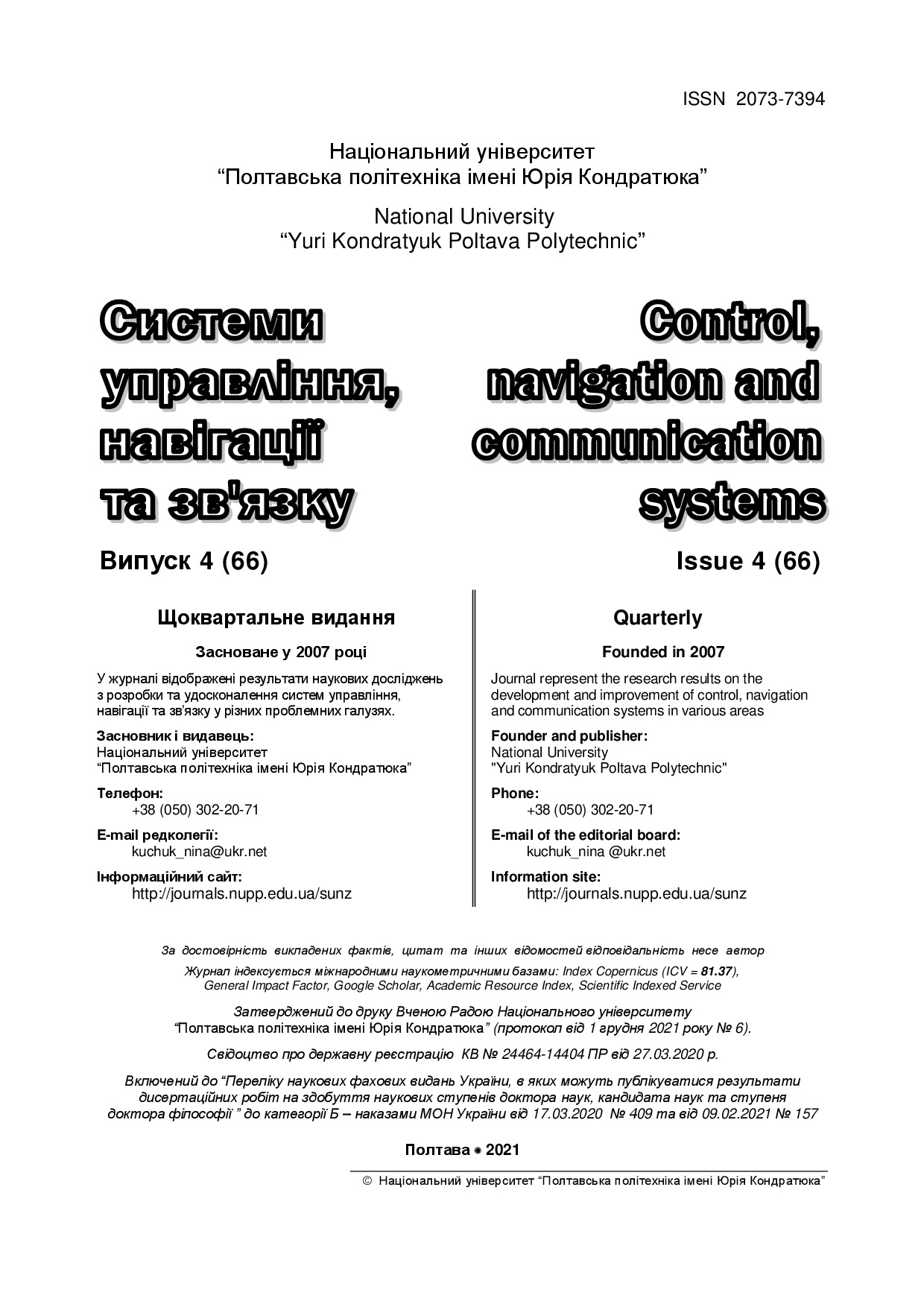CROSS-CORRELATION OF A MULTIDIMENSIONAL SYSTEM
DOI:
https://doi.org/10.26906/SUNZ.2021.4.016Keywords:
correlation analysis, multidimensional linear system, even and odd components, continuity, random variablesAbstract
The subject of research in the article is the peculiar behavior of the mutual correlation functions of generalized coordinates - the presence of a discontinuity of the first kind when the argument passes from its positive values to negative ones. The goal is to assess the possibility of forming a gap between the even and odd components of the correlation function and to substantiate this phenomenon. Applied methods: comparison of two functions of real variables based on the Fourier transform, statistical methods of data analysis, theory of random functions, correlation analysis. The obtained results: construction of principles for obtaining even and odd components of the correlation function of a multidimensional linear system with an analysis of their continuity in the general sense; the interpretation of such expressions is proposed as the limit of a sequence of continuous functions, which ensures their continuity in the general sense and eliminates the inconsistency that has arisen in this case. The practical significance of the work lies in the construction of a model of cross-correlation of generalized coordinates of a linear system, taking into account the peculiarities of the behavior of the correlation functions.Downloads
References
Van Trees H. L., Bell K. L., and Tiany Z. (2013) Detection Estimation and Modulation Theory, 2nd Edition, Part I, Detection, Estimation, and Filtering Theory, John Wiley & Sons, New York.
Tuzlukov V. P. (2002) Signal Processing Noise, CRC Press LLC, Boca Raton.
Mourad Barkat (2005) Signal Detection and Estimation, Artech House, Boston.
Middleton D. (2012) Non-Gaussian Statistical Communication Theory, Jonn Willey & Sons, New Jersey.
Zhao Huihong, and Chenghui Zhang (2016) “Non-Gaussian noise quadratic estimation for linear discrete-time time-varying systems”, Neurocomputing, 174 (B), pp. 921- 927, DOI: https://doi.org/10.1016/J.NEUCOM.2015.10.015
Kunchenko Y. P. (2002) Polynomial Parameter Estimations of Close to Gaussian Random variables. Germany, Aachen: Shaker Verlag.
Vokorokos L., Marchevský S., Ivchenko A., Palahina E., and Palahin V. (2016) “Parameters Estimation of Correlated non-Gaussian processes by the Method of Polynomial Maximization”, IET Signal Processing, pp. 313-319, DOI: https://doi.org/10.1049/iet-spr.2016.0142
Ahlen A., Sternad M. (1989) “Optimal deconvolution based on polynominal method”, IEEE Trans. Acoust. Speech, 37 (2), pp. 217–226.
Towghi N., Javidi B. (2001) Image recognition in the presence of non-Gaussian noise with unknown statistics, J. Opt. Soc. Am., 18 (11), pp. 2744–2753, DOI: https://doi.org/10.1364/josaa.18.002744
Guo L., Wang H., Chai T. (2006) “Fault detection for non-linear non-Gaussian stochastic systems using entropy optimization principle”, Trans. Inst. Meas. Control, 28 (2), pp. 145–161, DOI: https://doi.org/10.1191/0142331206tm169oa
Huihong Zhao, Chenghui Zhang (2016) “Non-Gaussian noise quadratic estimation for linear discrete-time time-varying systems”, Neurocomputing, 174, pp. 921-927, DOI: https://doi.org/10.1016/j.neucom.2015.10.015




